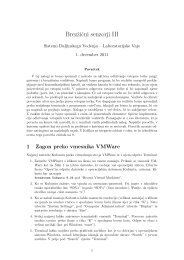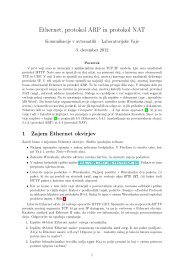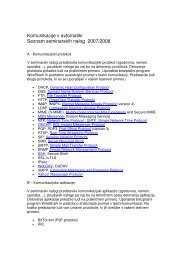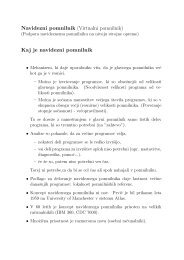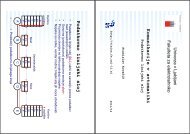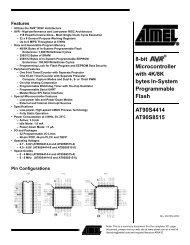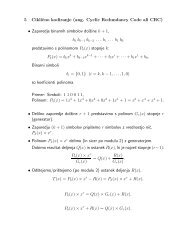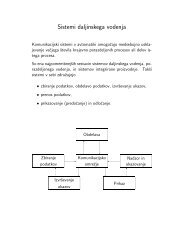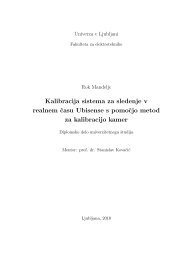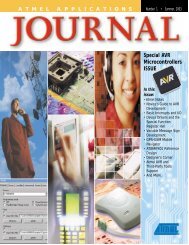avtomatska analiza gibanja v izbranih moštvenih športnih igrah
avtomatska analiza gibanja v izbranih moštvenih športnih igrah
avtomatska analiza gibanja v izbranih moštvenih športnih igrah
You also want an ePaper? Increase the reach of your titles
YUMPU automatically turns print PDFs into web optimized ePapers that Google loves.
activity templates, stored in a database. To do this we have to solve the problem<br />
of player-role correspondence between the player roles in the analyzed activity<br />
and the activity template. For this reason we decompose the compared semantic<br />
description into five distinctive player agendas. By comparing the individual<br />
player agendas we solve the problem of player correspondence and at the same<br />
time obtain the similarity of the compared semantic description. Finally, the<br />
analyzed activity is assigned the label of the template that obtained the highest<br />
similarity (smallest distance of descriptions). Such an approach has turned out<br />
to be extremely robust with regard to the spurious symbols in the descriptions.<br />
The spurious symbols are obtained as a consequence of incomplete segmentation<br />
and errors in the data acquisition procedures.<br />
Once the activity is recognized and the players-role correspondence is<br />
established, we can perform a detailed analysis of the activity by precisely<br />
analyzing different temporal and logical relations between individual actions. To<br />
do this we propose two different approaches for modeling the temporal and logical<br />
relations between actions. In the first case a multi-level Bayesian network is<br />
used to model the relations between different levels of abstraction which can be<br />
observed in the activity (i.e. activity, player, individual actions and temporal<br />
relations). In the second case the Petri net is used for evaluation. In this case<br />
the individual actions are modeled as instantaneous events in the form of a three-<br />
node action chains which are connected together by considering the previously<br />
described relations. The evaluation of the spatial and temporal properties is in<br />
both cases carried out using trajectory-based action detectors. The two presented<br />
approaches were evaluated using several examples of real basketball activities.<br />
The obtained experimental results suggest that these approaches can be used for<br />
the activity evaluation as well as to determine the stage in which the activity was<br />
concluded. Additionally, we can conclude that some complementary information<br />
should be used in order to bridge the gap between the scores obtained by the<br />
experts and the scores obtained by the proposed evaluation methods.<br />
Described analysis methods were built into a prototypical game analysis<br />
module which is a minor part of a larger analysis system that was developed<br />
in recent years. The game analysis module enables the user to perform the<br />
qualitative analysis of the game using the previously described analysis methods.<br />
Furthermore, several additional functions were developed which enable the user<br />
to obtain the quantitative data about the player motion during the game. The





